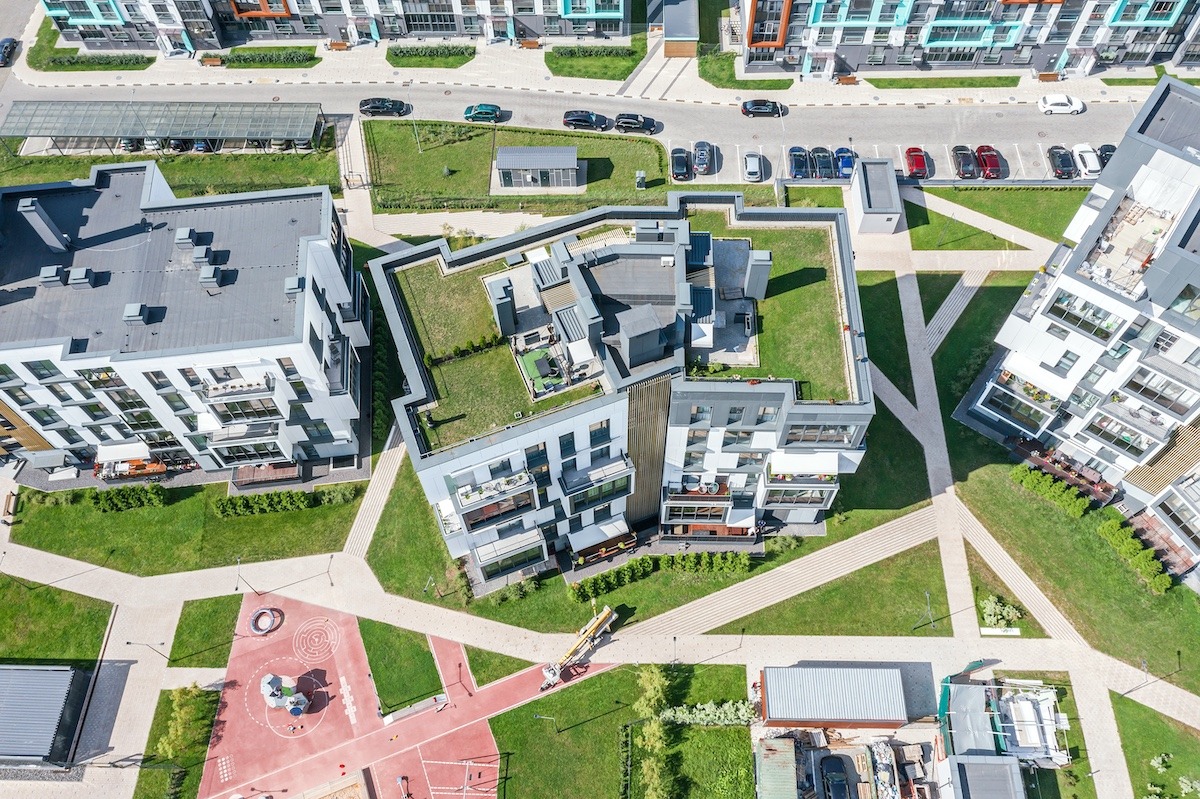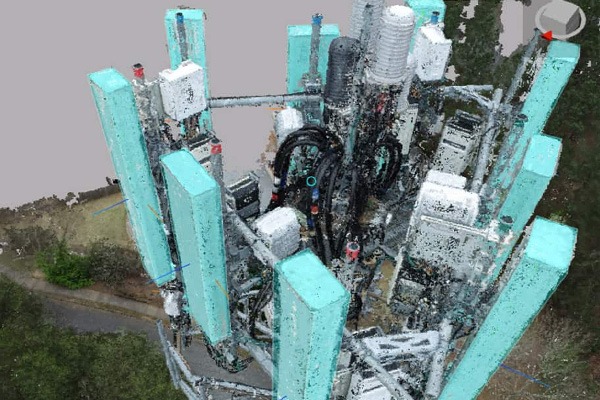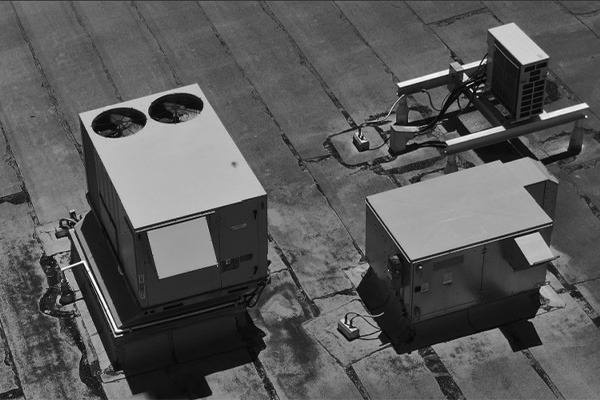Cost-Effective Performance: How Digital Inspections on Facades & Roofs Innovate Short-Term Gains & Long-Term Benefits
Technology plays a transformative role in today’s rapidly evolving property management landscape. For property owners managing commercial buildings, keeping facades and roofs in good condition is crucial to maintaining asset value and ensuring safety. Traditional methods of inspecting these key building components often involve manual labor, specialized equipment, and significant time investment, which leads to substantial costs. However, advancements in digital inspection technologies—such as drones, 3D modeling, and AI-driven analytics—offer a more efficient and cost-effective alternative.
Below we explore the cost-effective analysis of performing digital inspections on facades and roofs, highlighting both short-term financial gains and long-term benefits for property owners and managers. Also included are facade and roof case studies and statistical support to demonstrate the potential impact on property portfolios.
Short-Term Cost Savings from Digital Inspections
In the short term, digital inspections offer immediate cost-saving opportunities by reducing the need for manual labor, expensive equipment, and prolonged inspections. The ability to deploy drones or use other digital tools drastically minimizes the physical and financial challenges associated with traditional inspections.
1. Reduced Labor & Equipment Costs
Traditional inspections often require a team of trained professionals, specialized equipment such as scaffolding, and, in some cases, even cranes or lifts. This can easily escalate costs, especially for tall buildings and large commercial properties. By leveraging drones, a single operator can gather the necessary data in a fraction of the time, without requiring complex setup.
According to PwC, drone inspections can reduce inspection costs by 30-50% compared to traditional methods. These savings are due in part to the elimination of scaffolding or lift rentals and fewer personnel required for the inspection. When multiple properties are involved, this cost reduction multiplies, making it easier for property teams to maintain consistent inspection schedules across their portfolio.
2. Quicker Turnaround Time for Inspections
Time is money, especially in the property management world. The longer an inspection takes, the more potential downtime and disruption tenants may face. Digital inspections with drones can be completed much faster than traditional methods, providing a quick turnaround for results and enabling faster decision-making on repairs and maintenance.
A report by MarketsandMarkets shows that drone-based inspections reduce the time spent on inspections by up to 80%. In commercial buildings, this efficiency translates to fewer disruptions to business operations and more rapid responses to potential issues, minimizing revenue loss.
3. Improved Accuracy & Early Detection of Issues
Digital inspections provide high-resolution images, thermal scans, and detailed 3D models that can detect issues invisible to the naked eye. Early identification of minor defects, such as small cracks or leaks, allows property owners to address them before they escalate into major and more expensive problems.
For instance, thermal imaging can detect insulation weaknesses or water leaks, helping prevent costly water damage or structural issues. McKinsey reports that predictive maintenance strategies—powered by data from digital inspections—can reduce maintenance costs by 10-20% and improve asset reliability by 20-40%.
4. Safety & Liability Reduction
Traditional roof and facade inspections can be dangerous, especially for tall or aging buildings. By using drones for inspections, property owners reduce the risk of accidents and lower liability. This is especially critical in urban environments where worker safety regulations are stringent, and liability costs can skyrocket in the event of an accident.
According to OSHA, falls account for nearly 40% of construction-related deaths. By reducing the need for workers to be physically present on roofs or scaffolding, digital inspections not only cut costs but also lower the risk of injury-related expenses.
Long-Term Benefits and ROI from Digital Inspections
While the short-term gains from digital inspections are significant, the long-term benefits are even more compelling. Proactive and predictive maintenance enabled by digital technologies leads to reduced repair costs, extended asset lifespans, and enhanced property value over time.
1. Proactive Maintenance Reduces Major Repairs
One of the biggest long-term benefits of digital inspections is the ability to implement proactive maintenance strategies. Regular inspections allow property owners to identify and address small issues before they escalate into major repairs. For instance, a small crack in the facade that goes unnoticed could eventually lead to water infiltration, which might cause structural damage or mold growth—both of which are expensive to repair.
According to the National Roofing Contractors Association (NRCA), proactive maintenance can extend the lifespan of a roof by up to 30%, saving thousands of dollars in premature replacement costs. Additionally, building facades that receive regular inspections and maintenance are less likely to experience major failures that can lead to significant repair bills or lawsuits due to structural hazards.
2. Improved Asset Value & Tenant Satisfaction
Maintaining the exterior of a building is essential not only for safety but also for the aesthetic appeal and value of the property. Well-maintained buildings are more attractive to tenants and potential buyers, which can increase property value and rental income. A report by Harvard’s Joint Center for Housing Studies found that well-maintained properties can command higher rents and experience lower vacancy rates than those that neglect regular upkeep.
For property owners with large portfolios, consistent digital inspections across all buildings ensure that all properties remain in good condition, which helps avoid sudden drops in value due to deferred maintenance or neglected repairs. Additionally, satisfied tenants who feel safe in well-maintained buildings are more likely to renew leases, reducing turnover and vacancy rates.
3. Data-Driven Decision Making & Predictive Maintenance
One of the most exciting advantages of digital inspections is the wealth of data they provide. By continuously monitoring the condition of facades and roofs, property owners can accumulate data that can be used to make informed decisions about future maintenance, repair scheduling, and budget allocation.
AI-driven predictive maintenance models use this data to forecast when components of a building, such as roof membranes or facade cladding, are likely to fail, enabling property owners to schedule repairs at the most cost-effective time. According to Deloitte, predictive maintenance strategies that leverage AI and machine learning can reduce unplanned downtime by up to 50% and extend the life of critical infrastructure by 20-40%.
4. Insurance Premium Reductions
Consistent digital inspections can also result in lower insurance premiums for property owners. Insurers may offer discounts to owners who can demonstrate a proactive approach to maintenance and reduced risk of property damage due to weather or structural failure. By conducting regular digital inspections and providing detailed reports, owners can negotiate better insurance terms and avoid costly claims.
According to FEMA, buildings that undergo regular maintenance and inspections are less likely to suffer catastrophic failures during natural disasters, such as hurricanes or severe storms, leading to fewer insurance claims and lower premiums.
5. Compliance with Local Building Codes
In many U.S. cities, buildings must comply with facade inspection laws. For example, New York City’s Local Law 11 mandates periodic inspections of building facades over six stories. Failure to comply can lead to hefty fines and even litigation. By employing digital inspections, property owners can ensure they stay compliant with local regulations and avoid costly penalties.
Case Study: Reducing Costs with Digital Inspections
A real estate investment firm managing 50 commercial properties across the U.S. transitioned to digital inspections in 2020. Previously, the firm spent approximately $750,000 per year on traditional roof and facade inspections. After switching to drone-based digital inspections, the firm reduced these costs by 45%, saving over $337,500 annually.
Additionally, by identifying early-stage issues such as small leaks and cracks in facade materials, the firm avoided major repairs that would have cost an estimated $500,000. Over the first three years of digital inspections, the total savings exceeded $1 million, while also improving tenant satisfaction and reducing insurance premiums.
A Win-Win Solution for Property Owners & Managers
In both the short term and long term, digital inspections provide clear financial and operational benefits for property teams. By reducing labor costs, speeding up inspections, and improving accuracy, digital inspections deliver significant savings upfront. Over time, the ability to implement proactive maintenance strategies, make data-driven decisions and enhance property value ensures that digital inspections remain a cost-effective solution for property owners with large portfolios.
For property teams looking to reduce costs, extend the lifespan of their buildings, and improve overall efficiency, digital inspections are a no-brainer. By embracing this technology, property owners and managers can not only protect their assets but also position themselves for long-term financial success.
To learn more about Pointivo’s AI-driven platform and reporting capabilities, contact us at team@pointivo.com.
Don’t forget to share this post!
[tags]






